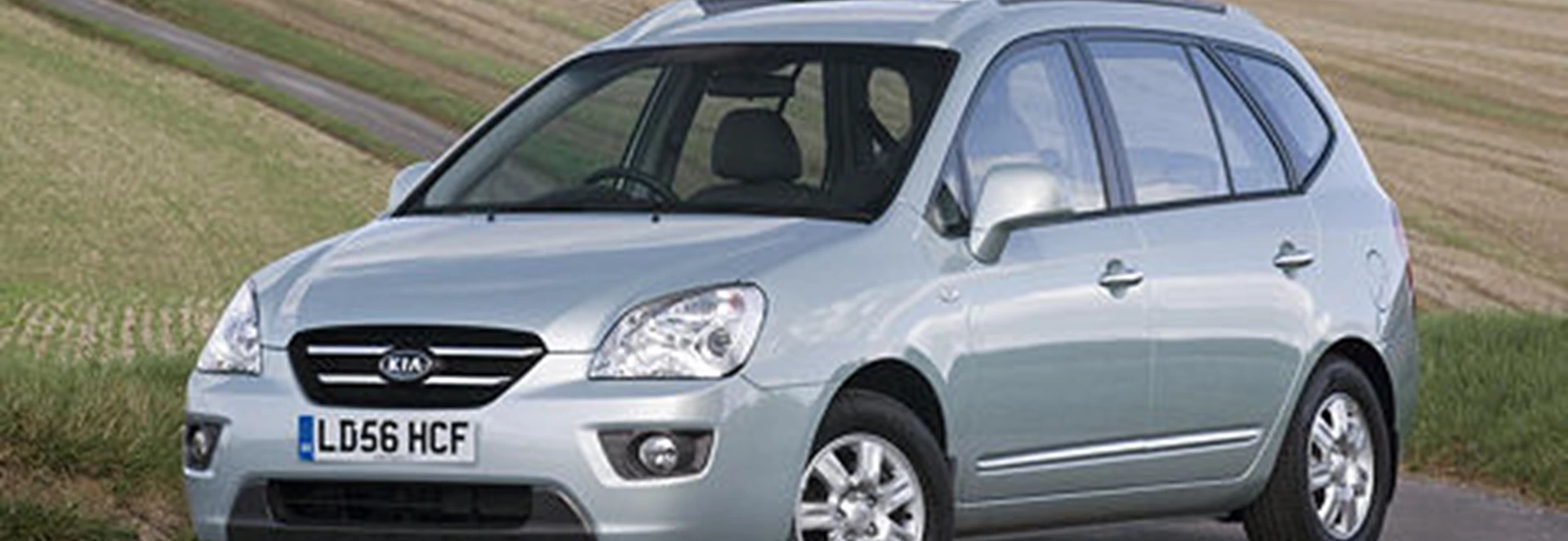Following Kia tradition, the second-generation Carens derives a lot of its appeal from the fact that it's quite a big car for relatively little money. That said, though, if you're going to buy a Carens, the range-topping 2.0 CRDi LS tested here is probably the optimum choice.For a start, it uses Kia's 138bhp two-litre turbo diesel engine rather than the similarly-sized 142bhp petrol alternative. I haven't driven a petrol Carens yet, but I would be very surprised if it could match this one. The maximum performance figures are similar in each case, and the diesel produces so much more torque at so few revs that it simply has to be better in the mid-range.It's more economical too, of course, and especially so in the case of the LS. For some reason - Kia reckons it's to do with the larger wheels and lower-profile tyres - the LS is slightly more economical than the lesser GS, and has a lower CO2 rating, though not so much less that it falls into a lower tax bracket.The LS is also the only Carens to come with seven seats as standard. Although it's based on a shortened version of the Magentis floorpan, and therefore isn't uncommonly large for a compact MPV, the Carens is so well packaged that it really can transport seven people of above kindergarten age in reasonable comfort.It can't do this and transport much luggage at the same time, but if you fold down the seats in the second and third rows you open up a potential 2106 litres of space, with the seat backs acting as a flat floor. On the occasion when I had to transport a whole heap of musical equipment for 100 miles, this proved to be a very welcome feature.What was less welcome was the fact that I had to take absolutely everything out at the other end before parking the car overnight. Yes, I know that was the sensible thing to do anyway, but the point is that Kia has not supplied the Carens with any form of luggage cover. That could be a cause for concern if you had to leave it in town even for as little as two minutes.The diesel engine has enough power to make the Carens spank along quite nicely, as long as you stick with the standard six-speed manual gearbox. You could spend an extra £1000 on the optional four-speed automatic, but this has roughly the same effect as hitting a racehorse between the eyes with an iron bar.On paper there doesn't seem to be much difference (same top speed, 1.6-second difference in the 0-62mph time) but believe me, the automatic feels incredibly slow in real life. Unless you have a very good reason for letting the car choose its own gears, stick with the manual.It's unlikely that the original Carens was driven particularly hard by most owners, but if you tried to do so you quickly found that it was seriously lacking in the dynamics department. The new one is vastly better, and in particular it rides very well over most surfaces, though it starts to feel a bit floppy at the front end if you push as hard over a series of crests and dips as the engine will allow you to.There's also a big difference in the perceived quality of the old and new Carens - far more so than the mere passing of time between their respective launches would suggest. This one is a much better car all round, and while it's not the best overall in a segment which includes a lot of exceptionally capable compact MPVs, it sits high on the list when its combination of price and ability is taken into account. Engine 1991 cc, 4 cylinders Power 138 bhp @4000 rpm Torque 225 ib/ft @1800 rpm Transmission 6 speed manual Fuel/CO2 46.3 mpg / 163 g/km Acceleration 0-62mph: 11sec Top speed 116 mph Price From £17144.00 approx Release date 07/10/2006

Our Rating



